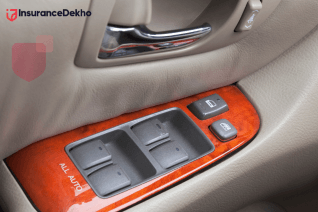Things to Know About IDV in Car Insurance
IDV in simple terms is the current market value of a car. It is defined as the assured compensation amount that the insurer will pay in case the vehicle is stolen, damaged or confirmed to be a total loss.
Table of Contents
Insured Declared Value (IDV) is the maximum amount the insurer may reimburse you with a loss. Your insured vehicle's IDV is its approximate current market value. If your car's IDV is set at Rs. 5 lacs, the Insurance Company will only pay you up to that amount.

Things to Know About IDV in Car Insurance
Let's look at the effect of IDV on your insurance policy.
Own Damage Coverage, for example, is a useful but optional coverage. It compensates you if your car is declared completely lost because of an accident or natural disaster.
In measuring its own damage portion of the premium, IDV is critical. Based on the vehicle's age and cubic capacity, this portion of the premium will range from 2% to 3% of the IDV. Only remember the higher the IDV, the higher the premium, and vice versa. It will be virtually impossible to arrive at the OD premium if you haven't measured the IDV for your vehicle.
What Happens If You Declare A Low IDV?
Since your car's OD premium is directly proportional to the IDV, your IDV is lower than the market value. This implies that the lower the IDV, the lower the premium. You may save money on premiums if your IDV is lower. In the event of an injury, however, you will be credited with a lower claim number. And if the unintentional costs exceed the IDV, you'll have to spend a fortune unnecessarily.
Is It A Good Idea To Declare A Higher IDV?
Assume that the claim amount will grow. If you were to sell your car, it would be worth more than the current market value. That isn't always the case. The full total insured amount that the insurance firm promises to pay you for your loss is known as the IDV.
Finally, keep in mind:
- Get an IDV that is like your car's market value.
- Lowering the IDV value would cause lower premiums and coverage.
The IDV of your car decreases as it gets older, as a result, choosing an IDV that is higher than the current market value could cause claim denial or restricted claim settlement.
How To Calculate IDV For Car Insurance?
The Insured Declared Value (IDV) is the maximum amount an insurance company must pay you if your car is damaged. Your car's IDV is determined by the manufacturer's specified selling price for the model and brand. The higher the car's age, the higher the depreciation percentage. This volume of depreciation is set in stone.
In summary, keep in mind that a new car will still have the highest IDV, which will eventually decrease because of depreciation. The IDV of a new car is full, but as the car ages, the rate of depreciation rises. The IDV is decided in such situations because of a shared agreement between you and the insurer.
If your car is over 5 years old, your IDV is calculated by:
- The manufacturer
- Car model
- Availability of the spares parts
- Assess the IDV during policy renewal.
Take Away
Do not automatically agree to pay what your insurer requests when your policy is up for renewal. Purchasing car insurance is a long-term commitment. Because of deductions in reimbursement of IDV, you can not get what you want when filing a claim. Thus, be aware and make an informed decision for the IDV of your car as it is your right to keep your car's correct IDV value. So stay alert and monitor your IDV.
Disclaimer: This article is issued in the general public interest and meant for general information purposes only. Readers are advised not to rely on the contents of the article as conclusive in nature and should research further or consult an expert in this regard.














































